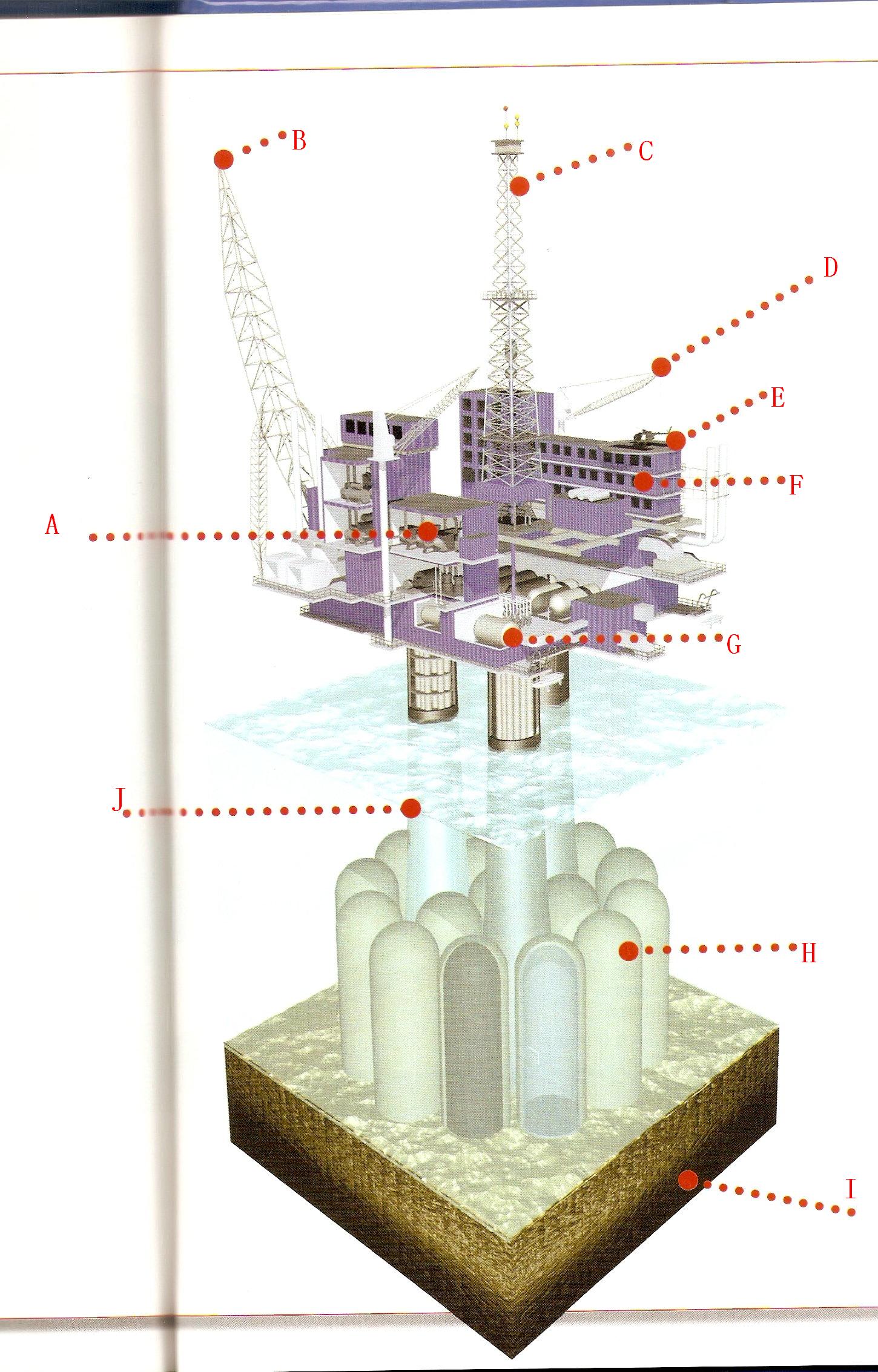This is an article from one English book. Can you understand?
If you know a little, please share. Thanks a lot.
If you got some questions, please ask it out. Maybe someon can help you hopely.
OIL RIG (<HOW THINGS WORK> p226)
PLUMBING THE DEPTHS
The world consumes over 68 million barrels of oil a day. Much of it comes from large oil rigs, or platforms, scattered across the oceans of the world. These rigs either float on the sea or stand on the seabed. They drill into the seabed to the oil deposits beneath it. The oil is pumped to the surface and carried by tanker or pipeline to refineries on land. Natural gas is often found with the oil and can be extracted at the same time.
BRANCHING OUT
A system called directional drilling allows wells to be drilled at different angles instead of straight down. This means that many oil field can be reached from one rig. A single rig can receive oil from up to 60 wells.
KINDS OF RIGS
A floating rig, or semi-submersible platform, rests on huge floats called pontoons. It is held in place above the oil well by steel cables that anchor each corner of the platform to the seabed. Some rigs, called guyed tower platforms, stand on a steel framework that reaches down to the seabed. The tower is anchored to the seabed with steel cables. Gravity platforms are the biggest and heaviest. These huge concrete structures rest directly on the seabed, held in place by their sheer weight. A platform is like a small town. It has its own power supply, water supply, living quarters, helicopter pad, and medical facilities. Oil workers may live and work on the rigs for weeks at a time. The tallest oil rig is the Mars platform in the Gulf of Mexico. It rises 2,940ft(896m) from the seabed to the surface. It stands twice as high as the Empire State Building. The Mars platform produces 38,000 barrels of oil per day.

 A
A-- Gas purification system
The natural gas that comes to the surface with the crude oil is a mixture of gases. The useful part of the mixture is taken out, turned into a liquid, and sent ashore.
J-- Rig support legs
The legs house the drill that digs its way down to the oil field. Once a well has been drilled, the legs contain the pipes carrying oil, gas, and water. The oil and gas are separated and purified. The gas is pumped to the mainland through pipes. When the pipeline is shut down, the gas is burned, or flared, off.
B-- Flare
Excess gas, which comes up along with the oil, is burned off here.
C-- Derrick
The derrick is uesd to hold lengths of pipe while the well is being drilled. When the well is producing oil, the derrick is used to repair the pipes connecting the well to the rig.
D-- Crane
A crane is used to move objects around the rig, and to lower and raise diving bells.
E-- Helicopter pad
Workers and supplies are flown to the rig by helicopter.
F-- Living quarters
Workers may live on the rig for weeks at a time.
G-- Oil purification system
Oil pumped from the well contains mud and sea water which have to be removed before the oil is taken to the onshore refinery.
H-- Storage/ballast tanks
The base of a gravity rig consists of huge concrete tanks, each 66ft(20m) in diameter and 164ft(50m) high. These are used to store oil before it is collected by a tanker or pumped through a pipeline to refinery on shore. The tanks are filled with sea water when there is no oil in them. The steel skirt around the bottom of the tanks cuts into the seabed, anchoring it there as the rig settles.
I-- Oil!
An oil deposit may be 1.86mi(3km) below the seabed.
[
本帖最后由 zuopyu 于 2009-4-14 22:16 编辑 ].